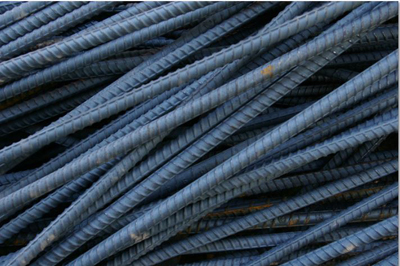Employment rose in 32 states in 2016; materials costs climb; yearend Dodge starts slip
 Editor’s note: Construction Citizen is proud to partner with AGC America to bring you AGC Chief Economist Ken Simonson's Data DIGest. Check back each week to get Ken's expert analysis of what's happening in our industry.
Editor’s note: Construction Citizen is proud to partner with AGC America to bring you AGC Chief Economist Ken Simonson's Data DIGest. Check back each week to get Ken's expert analysis of what's happening in our industry.
Seasonally adjusted construction employment rose in 32 states from December 2015 to December 2016 and fell in 18 states and the District of Columbia, an AGC analysis of Bureau of Labor Statistics (BLS) data released on January 23 showed. Nevada again led in percentage gain (15%, 11,000 jobs), followed by Oregon (9.0%, 7,600), Iowa (8.3%, 6,900), Minnesota (8.0%, 9,300), Washington (7.6%, 13,500) and Colorado (7.0%, 11,000). Florida added the most jobs (22,300 jobs, 5.1%), followed by California (20,900, 2.8%), Washington, Nevada and Colorado. Illinois lost the most jobs (-9,700 jobs, -4.5%), followed by New York (-7,800, -2.1%), Alabama (-6,100, -7.4%) and Kentucky (-5,000, -7.4%). Alabama and North Dakota (-7.4%, -2,400 jobs) had the steepest percentage loss, followed by Kansas (-6.8%, -4,200) and Kentucky. For the month, employment rose in 26 states and D.C., shrank in 21 states and was flat in Connecticut, Maryland and New Mexico. (AGC's rankings are based on seasonally adjusted data, which in D.C., Maryland and five other states is available only for construction, mining and logging combined.)
Prices for several construction materials are rising. New South Construction News reported on January 23, "domestic rebar mills announced price increases on January 10 and 11 of $40/ton effective immediately. Since mid-October, domestic mills have increased rebar prices by $115/ton....Several major domestic manufacturers announced on January 10 that they will increase prices by $45/ton effective February 1. After the February 1 wire rod price increase announcements, concrete reinforcing wire mesh manufacturers indicated they will increase prices again by [February 1] by 5 to 7%.... Major masonry reinforcing and tie manufacturers announced they will increase prices [by 12-15%] effective January 23 due to recent price escalations for wire rod and zinc. Copper and stainless steel thru-wall flashing manufacturers will also increase prices [by 15-18%] on January 23." Several insulation manufacturers announced 6% price increases in January. AGC members passed along supplier letters "announcing a price increase of approximately 4% effective for all building orders quoted on or after February 13" and ready-mix concrete price hikes for Utah in April. Readers are invited to send letters to simonsonk@agc.org.
Consultancy IHS Markit and the Procurement Executives Group (PEG) reported on Wednesday that "Construction costs rose again in January on strength in labor and materials costs....The headline IHS PEG Engineering and Construction Cost Index registered 57.7 in January, the highest headline reading since September 2014 and up from 53.3 in December" on a scale from 0 to 100 in which a reading higher than 50 represents upward pricing strength; below 50, downward pressure. "The current materials/equipment price index came in at 59.9 in January. Of the 12 categories tracked in the materials sub-index, 10 showed rising prices. The two categories that recorded falling prices were ocean freight: Asia to U.S. and Europe to U.S. Of the remaining 10 categories, the index figure for all—with the exception of copper-based wire and cable—rose compared to December. The copper index, which had increased significantly in December, gave back a little in January. However, it was still above 60, indicating increasing prices for copper-based wire and cable. All steel-related series showed strong price increases. Carbon steel pipe experienced the highest escalation compared to last month....The current subcontractor labor index came in at 52.6 this month. While slightly lower than December's reading of 53.1, the January reading still presents positive momentum."
The value of construction starts decreased 5% from November to December at a seasonally adjusted annual rate, Dodge Data & Analytics reported on Tuesday. "The latest month's decline for total construction was due to sharply reduced activity for the nonbuilding construction sector [-41%], reflecting further erosion by public works as well as a steep plunge by the electric utility/gas plant category. At the same time, nonresidential building in December held steady with its November pace, and residential building was able to register moderate growth [9%]. For all of 2016, total construction starts advanced 1%..., a considerably smaller gain than the 11% increase reported for 2015. If the volatile manufacturing plant and electric utility/gas plant categories are excluded, total construction starts in 2016 would be up 4%, depicting a more gradual deceleration relative to the corresponding 9% increase in 2015," with gains of 4% for nonresidential building and 6% for residential building offsetting an 11% drop in nonbuilding construction.
Union membership dropped to 6.4% of total private-sector employment in 2016 from 6.7% in 2015, BLS reported on Thursday. In contrast, union membership in the construction industry (covering all occupations) rose to 13.9% from 13.2%. Among private industries, union membership in construction is outpaced only by utilities (21.5%) and transportation and warehousing (18.4%).Union representation in construction increased to 14.6% from 14.0%. The number of union-represented employees in the industry also rose over the year, from 992,000 to 1,095,000, while the total number of workers in the industry rose from 7,109,000 to 7,488,000. Since 2006, the percentage of union-represented employees in the industry has fluctuated between 13.6% in 2006 and 16.2% in 2008. Median weekly earnings of all employees in the construction industry rose to $822 in 2016 from $784 in 2015. Union-represented workers' earnings were 47% higher than nonunion workers' earnings in the industry, but they rose at a slightly lower rate over the year. Union-represented workers' weekly earnings increased about 4.8% to $1,146 from $1,093, while nonunion workers' increased about 5% to $780 from $743.
The Data DIGest is a weekly summary of economic news; items most relevant to construction are in italics. All rights reserved. Sign up at www.agc.org/datadigest.


